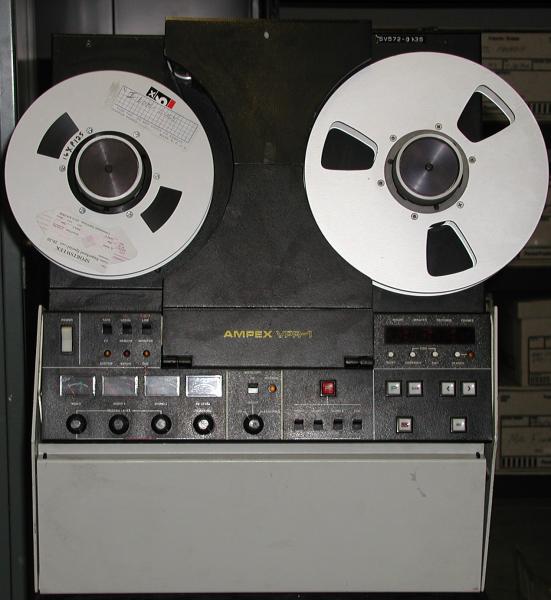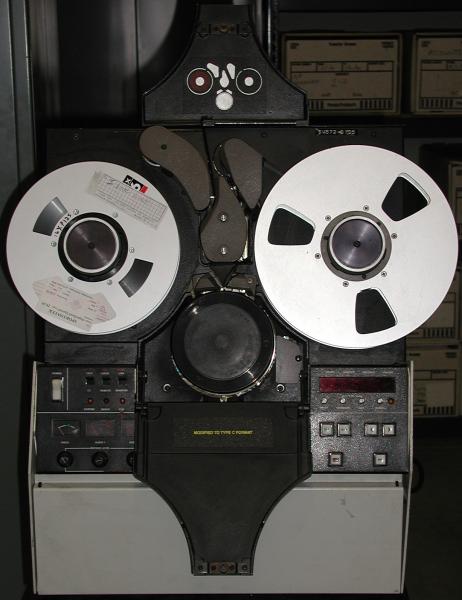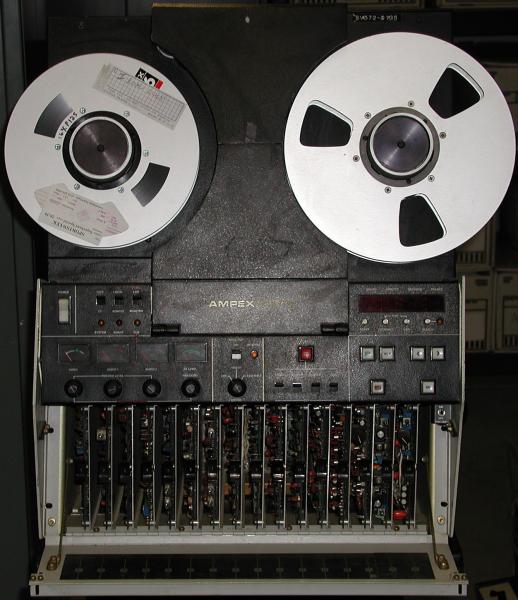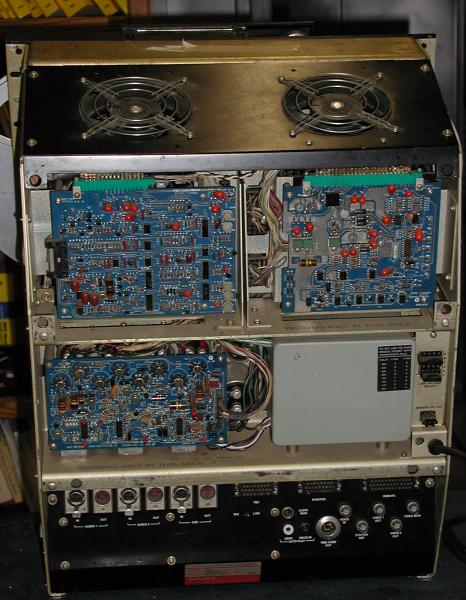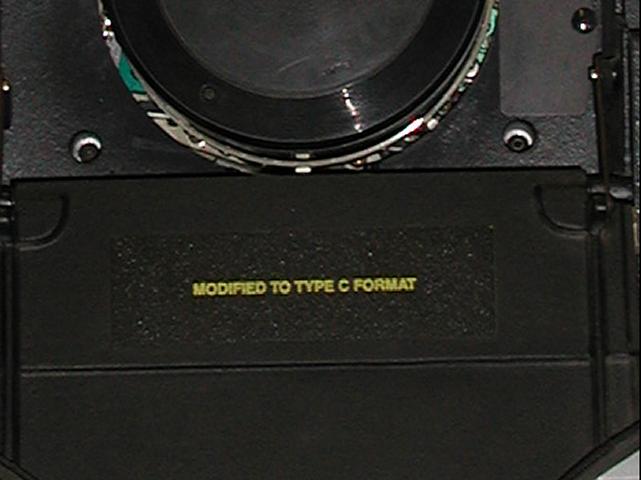Here is the first 1 inch type C format machine from Ampex. But, it wasn't
always so! When this VTR was originally introduced in 1976, it was type
A format! But, Sony was working on a system so similar to the Ampex type
A format, that it was actually possible to go back and retrofit early VPR-1s
to the new Type C format. This is one of those machines! It is clearly
labeled on the bottom of the two tape path covers. "Modified to Type C
Format", it proudly declares and can be clearly seen in the last photo.
The type A format
was a single head, full alpha wrap design. This means that the tape was
wrapped almost all the way around the head drum. The shape of the tape
path resembled the Greek letter Alpha, hence the name. Conversely, on two
head machines, the tape wrap resembles the Greek letter omega, hence the
term "omega wrap. The shortcoming of the original Ampex type A format was
that for a brief moment, the video head leaves one edge of the tape, crosses
a small gap and then recontacts the opposite edge of the tape. During this
"crossover" time, there is no video signal. Ampex's solution was to time
the rotation of the head drum to place the crossover drop out in the vertical
interval and insert an artificial sync pulse. This process could not be
broadcast and still conform to FCC required practices.
An omega wrap
machine avoids this by using two video heads and a tape wrap slightly greater
than 180 degrees. This way there is always one head in contact with the
tape and at the vertical interval both heads are in contact with tape.
The down side to the omega wrap system is the tape only circumscribes half
the drum, |
cutting the relative head to
tape speed in half when compared to a single head system with the same
drum diameter.
Sony's solution was
very ingenious and was demonstrated on some of their earlier video recorders.
It is called the "one and a half head system". A second video head is placed
on the head drum some number of degrees behind the main video head. While
the main head is crossing over, the second head is reading from a short,
sort of in between, video track that contains only the vertical interval
information. In this manner, the machine can reconstruct a continuous,
uninterrupted video signal! Plus, the relative head to tape speed benefits
of the single head system! Thanks, Sony!
This machine supports
two sound tracks for stereo, a cue track for a second audio channel or
linear time code, as well as VITC (vertical interval time code). It has
three video outputs, two for program and one for monitor. Inputs include
all of the audio channels mentioned as well as video input and reference
sync input. All electronics are contained on plug in circuit boards located
in both the front and rear of the unit.
It can accommodate
10-1/2 inch reels allowing for up to 90 minutes of record / play time.
The companion time base corrector is the Ampex TBC-1, which I have and
which will be covered in an upcoming new museum page. Stay tuned for that!
NEEDED: Service
and operator's manuals for this VTR. |
